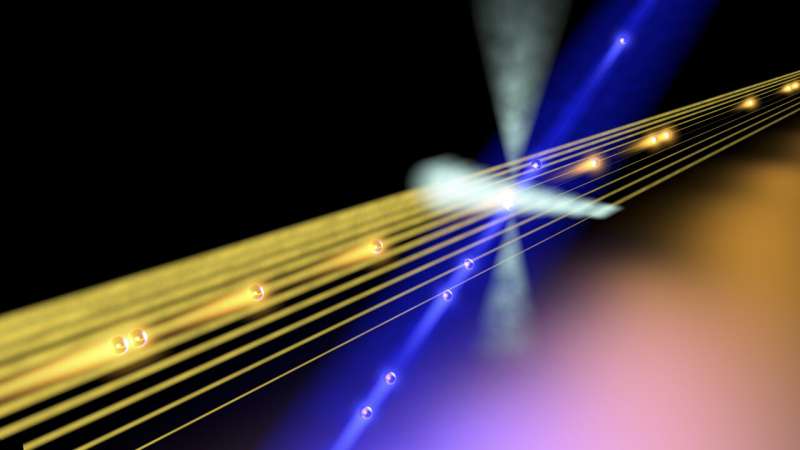This article has been reviewed according to Science X's editorial process and policies. Editors have highlighted the following attributes while ensuring the content's credibility:
fact-checked
peer-reviewed publication
trusted source
proofread
Researchers find new multiphoton effect within quantum interference of light

An international team of researchers from Leibniz University Hannover (Germany) and the University of Strathclyde in Glasgow (United Kingdom) has disproved a previously held assumption about the impact of multiphoton components in interference effects of thermal fields (e.g., sunlight) and parametric single photons (generated in non-linear crystals). The journal Physical Review Letters has published the team's research.
"We experimentally proved that the interference effect between thermal light and parametric single photons also leads to quantum interference with the background field. For this reason, the background cannot simply be neglected and subtracted from calculations, as has been the case up to now," says Prof. Dr. Michael Kues, Head of the Institute of Photonics and member of the Board of the PhoenixD Cluster of Excellence at Leibniz University Hannover.
The leading scientist was Ph.D. student Anahita Khodadad Kashi, who performs research on photonic quantum information processing at the Institute of Photonics. She investigated how the visibility of the so-called Hong-Ou-Mandel effect, a quantum interference effect, is affected by multiphoton contamination.
"With our experiment, we have disproved the previously valid assumption that multiphoton components would only impair visibility and can therefore be subtracted in the calculation," says Khodadad Kashi. "We have discovered a new fundamental characteristic that was not considered in previous calculations. Our newly developed model can predict the quantum interference and we can measure this effect in an experiment."
How new knowledge is created
The scientists came across their discovery while carrying out an experiment in the laser laboratory. They obtained a negative result when they initially followed the original calculation method. "But the result would have been physically impossible," says Khodadad Kashi. Together, the team began troubleshooting the experimental setup and the calculation model.
"When an experiment turns out very different from what is expected, scientists start questioning previous assumptions and look for new explanations," says Kues.
They jointly developed their new theory of quantum interference of thermal fields with parametric single photons. Quantum researcher Lucia Caspani from the University of Strathclyde in Glasgow was the first to test the approach. As the next step, Khodadad Kashi presented her theory and the experimental results at international conferences, including Photonics West in San Francisco. There, she discussed her model with other scientists and received confirmation of her results.
With the new theory and the experimental verification, Kues' team has made an important contribution to a better understanding of quantum phenomena. "The findings could be important for quantum key distribution, which is necessary for secure communications in the future, specifically how quantum interference effects are interpreted for the generation of secret keys," says Khodadad Kashi.
However, many questions remain unanswered, says Kues. "Little research has been done into multiphoton effects, so a lot of work is still needed."
More information: Anahita Khodadad Kashi et al, Spectral Hong-Ou-Mandel Effect between a Heralded Single-Photon State and a Thermal Field: Multiphoton Contamination and the Nonclassicality Threshold, Physical Review Letters (2023). DOI: 10.1103/PhysRevLett.131.233601
Journal information: Physical Review Letters
Provided by Leibniz University Hannover




















